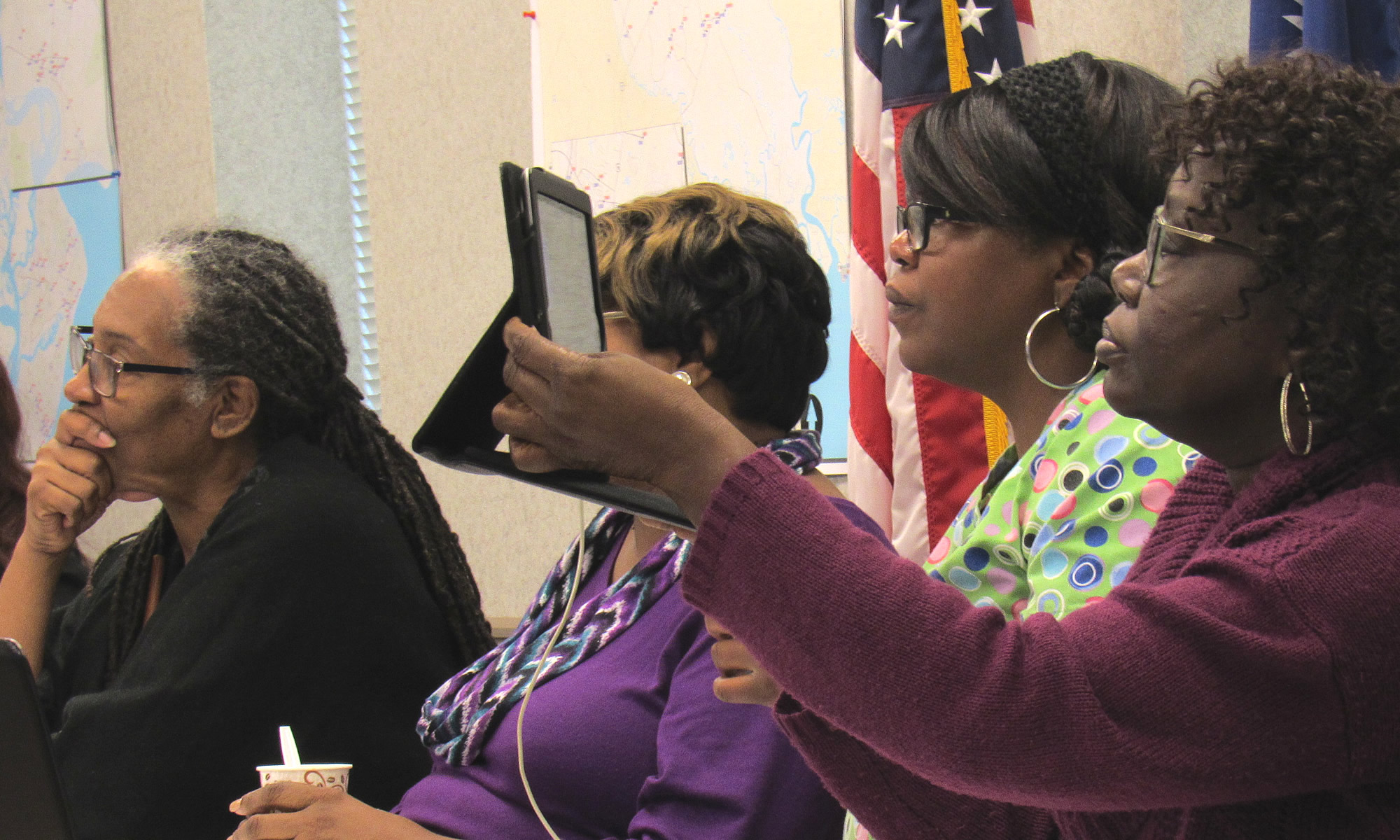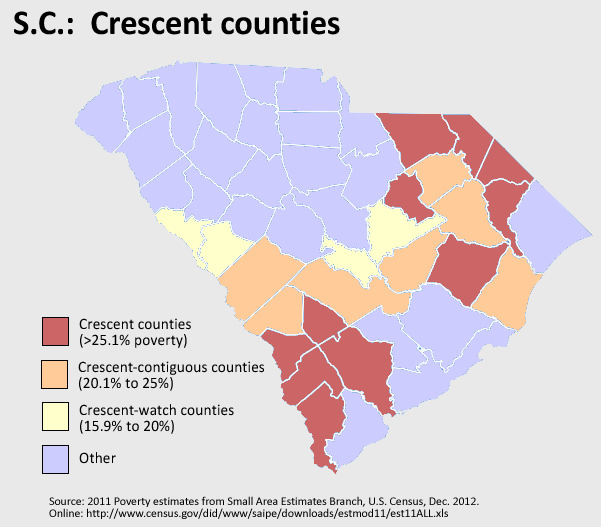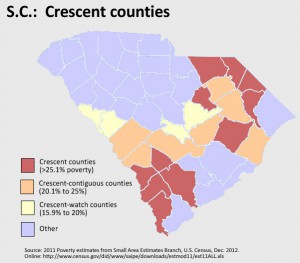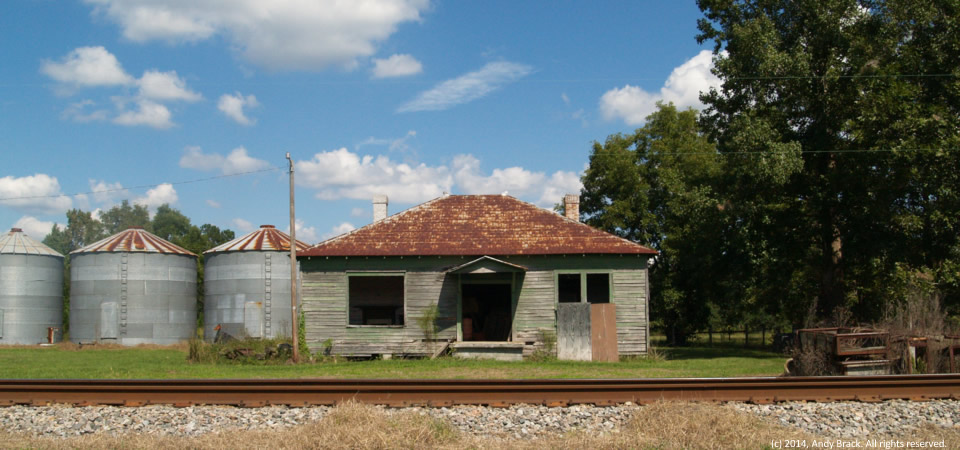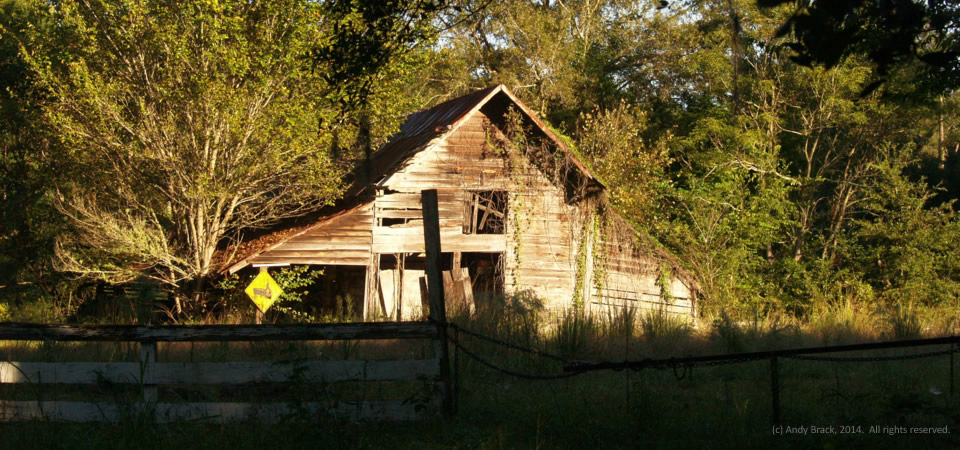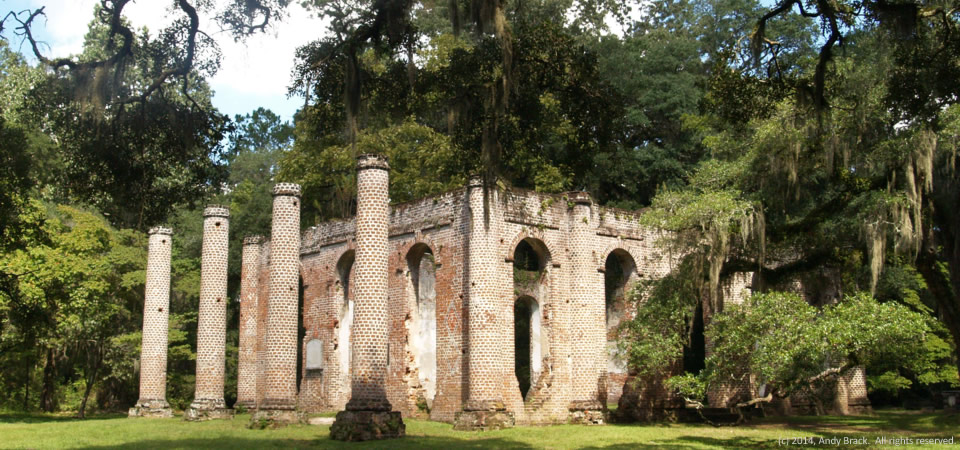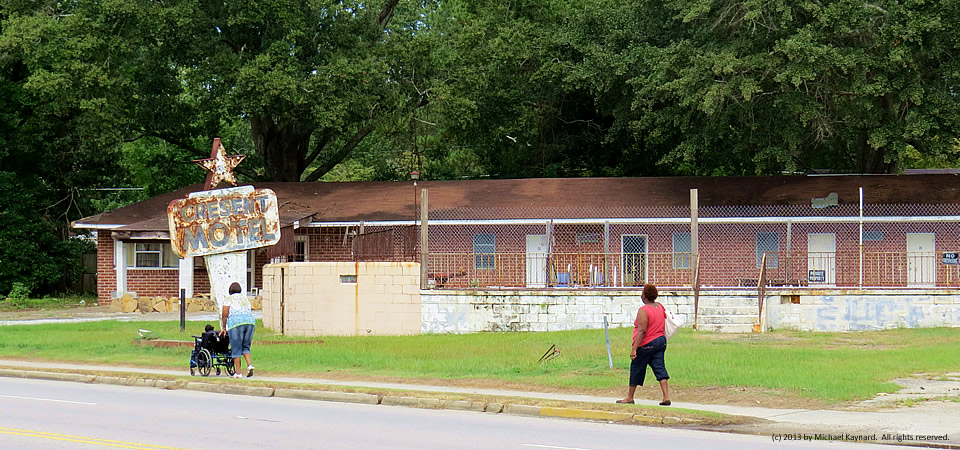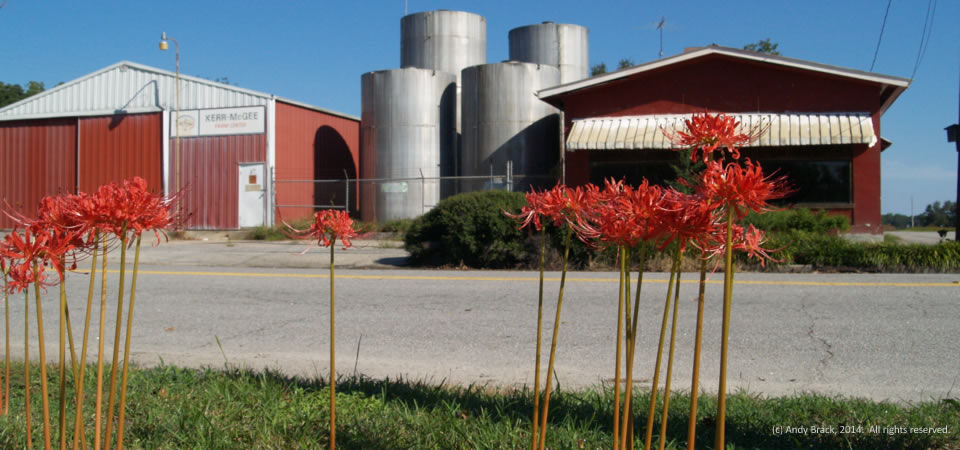
These vibrant spider lilies were in bloom near a sidewalk on the grounds of town hall in tiny Sycamore, S.C., in Allendale County when we passed by in early October. A week later, the grass had been cut and the lilies were gone.
Sycamore, a village of about 180 people, is about 60 percent white with a 35 percent black community of residents. Unlike the whole of Allendale County with its almost 40 percent poverty rate, poverty is comparatively low at 10 percent in Sycamore.
- More about Allendale County from QuickFacts from the U.S. Census.
- More about Sycamore.
Photo by Andy Brack, Center for a Better South, Oct. 1, 2014. All rights reserved.
